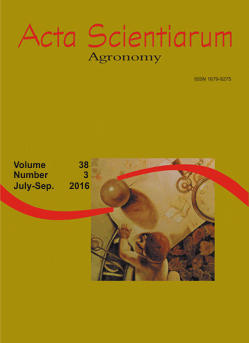<b>Economic recommendations for reseeding wheat crops
Abstract
There are several factors that may compromise the initial establishment of wheat crops, reduce the plant populations, and consequently affect yield components and grain yield. The objective of this study was to produce reseeding recommendations for wheat crops affected by reduced plant stands based on an economic analysis of the yield cost and the expectation of financial return. Experiments were conducted during two agricultural years (2011 and 2012) in the Experimental da Coxilha area, which belongs to the Department of Plant Science of Universidade Federal de Santa Maria, in the state of Rio Grande do Sul (Brazil). Random removals of wheat plants were undertaken, corresponding to 0, 20, 40, and 60% of the initial population of plants for the following cultivars: Fundacep Horizonte, Marfim, Fundacep Campo Real, Mirante and Quartzo. The characteristics that were evaluated included the number of plants and ears, as well as the grain yield. The Fundacep Horizonte, Marfim and Fundacep Campo Real cultivars were stable and able to compensate for losses caused by reductions in the plant stands. The yield production of Mirante and Quartz cultivars was dependent on the number of established plants and therefore relied on good establishment of the initial crop and no subsequent losses. Thus, the findings of this study indicate that the Mirante and Quartz cultivars do not compensate for reductions in plant populations and need to be reseeded if the number of plants is not appropriate. In such cases, the economic viability of reseeding can be quantified. In contrast, the Fundacep Horizonte, Marfim, and Fundacep Campo Real cultivars are more stable, and reseeding is not economically justified at these locations.
Downloads
DECLARATION OF ORIGINALITY AND COPYRIGHTS
I Declare that current article is original and has not been submitted for publication, in part or in whole, to any other national or international journal.
The copyrights belong exclusively to the authors. Published content is licensed under Creative Commons Attribution 4.0 (CC BY 4.0) guidelines, which allows sharing (copy and distribution of the material in any medium or format) and adaptation (remix, transform, and build upon the material) for any purpose, even commercially, under the terms of attribution.




















































